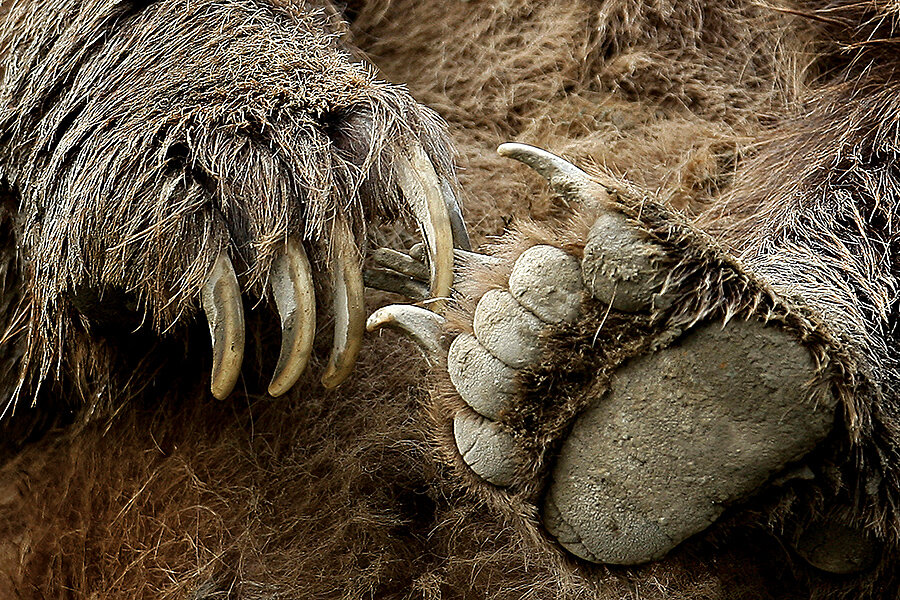What we owe Earth's other predators
Loading...
Apex predators such as lions, bears, and wolves sit atop the food chain. Until Homo sapiens came along, nothing could beat these powerful animals. Mano a mano, nothing still beats them. But with technology and teamwork, humans pushed apex predators to the fringes of the planet. They are now mostly seen from a safe distance – in zoos, wildlife preserves, and on National Geographic specials. Sometimes, though, a chance encounter occurs: A tiger mauls a farmer in northern India; a hiker startles a grizzly in Yellowstone. Trauma ensues.
Humans don’t tolerate animal attacks. Yet more people are killed by dogs every year in the United States than by free-range predators such as bears and wolves. While a dangerous dog might be destroyed, dogs themselves are flourishing. Between 70 million and 80 million of them live in American homes. They enjoy our largess, share our sofas, and rarely contribute to the bottom line. If an otherwise friendly dog snarls, we try not to provoke it again.
That should be how we treat free-range predators. They are more mysterious and potentially more aggressive than Canis familiaris, but a run-in with one is vastly more rare and shouldn’t lead to a death sentence. In a Monitor cover story, Todd Wilkinson, who has chronicled the return of wolves to the American West, reports on the difficult issues surrounding the return of grizzly bears. And Thomas D. Mangelsen’s stunning photos capture these magnificent creatures in the wild. (Click here to read and view.)
A grizzly can bump the scales at 500 to 600 pounds and be up to 10 feet tall. Little wonder that humans long feared them, fought them, reduced their numbers, and banished the remainder as the frontier expanded. In recent years, though, conservation efforts have brought these animals back from the verge of extinction. As their population has recovered and their range has extended, debate has stirred over whether to take them off the endangered species list. The success of species recovery could open the door to their being hunted again.
Grizzlies feed on elk, deer, and other species as well as the seeds from whitebark pine trees, cutthroat trout, and the army cutworm moth – not exactly human delicacies – and would rather give humans wide berth. Still, as bear populations increase, the possibility of conflict grows. Rare as a clash is, news of one spreads fast. Ranchers count their livestock and load their rifles. Park rangers and guides become more vigilant. Hiking and camping no longer seem like carefree vacation options, even though visitors are attracted to the wilderness in the first place because they want to get closer to nature.
Coexistence isn’t easy among humans, as each day’s news makes clear. It isn’t easy between humans and other species either, especially those that are big, powerful, and once were rivals for animal-kingdom dominance. But humans won that war. That achievement has brought with it responsibility for the well-being of Earth’s other creatures – if for no other reason than that it would be lonely at the apex without them.








